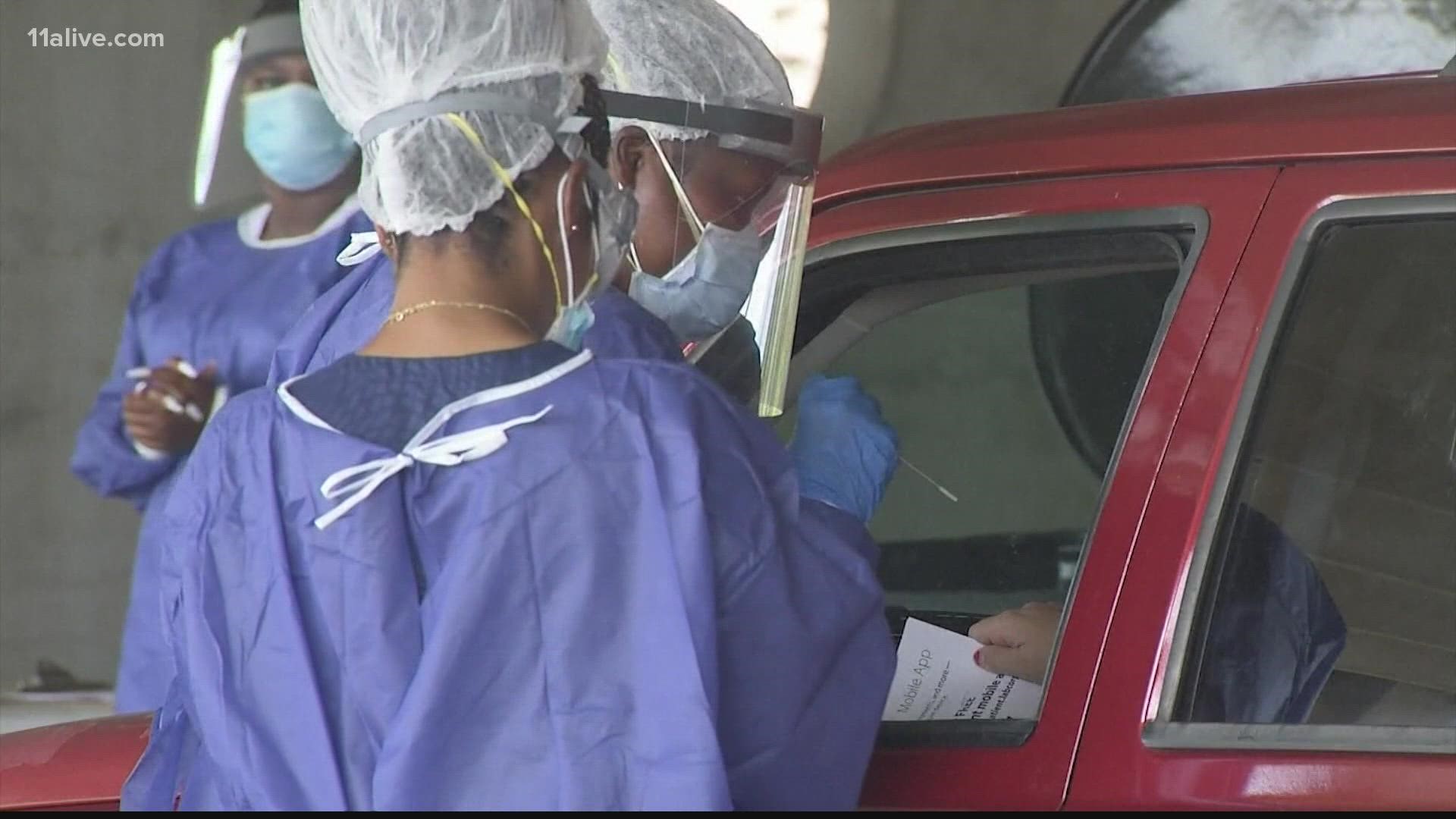ATLANTA — As the pandemic enters year three, the world has more data on COVID-19 and more models continue to pop up, showing what might happen in the next few months and in 2022.
From when cases from the latest surge may peak, to if vaccinations rates will hit a 70% threshold, to whether death rates may be lower in 2022, here’s three optimistic and three pessimistic predictions experts.
- COVID-19 cases will continue to rise and may peak in mid-Jan.
- The Institute for Health Metrics and Evaluation at the University of Washington’s School of Medicine recently revised its COVID-19 modeling. Researchers included information about the omicron variant and predict 140 million cases throughout the country from Jan. to March of 2022. The model also shows cases may peak in mid-Jan. with 2.8 million new daily cases. The number of cases may be higher or lower in real time, one due to this being a projection and two, with at home tests set to become more available to people because of President Joe Biden’s plan to distribute 500 million tests in Jan. This could lead to less people reporting cases to their health departments, false negatives, or false positives. President Biden’s top medical adviser Dr. Anthony Fauci also predicts a late Jan. peak in cases, telling CNBC, “I would imagine, given the size of our country and the diversity of vaccination versus not vaccination, that it likely will be more than a couple of weeks, probably by the end of Jan., I would think.”
- The idea of an endemic isn’t out of the picture
- Some may have thought the delta variant might signal the transition from pandemic to endemic, the omicron variant proved that theory wrong. While omicron certainly doesn’t mean this switch will happen either, the idea isn’t out of the picture. For a classification of endemic, infectious disease cases need to be somewhat stable over the years. With the rate at with omicron cases are rising in the country, the population could see a higher level of immunity, coupled with vaccinations. Natural immunity isn’t the only thing to bank on, but also the seemingly less deadly omicron variant may, in an odd way, help. Dr. Facui said, “If you have a very transmissible virus that replaces another virus, and [the replacement virus] has less of a degree of severity, that would be a positive outcome.” Fauci added this isn’t a guarantee because the virus has “fooled us before,” but said its technically possible omicron could hasten the end of the pandemic.
- Hospital resources might continue to be stretched thin
- The same model that showed cases peaking in January, also showed hospital resources will continue to be stretched thin, with the number of beds being needed peaking in mid-February. Atlanta hospitals are already seeing strain, and six putting out a joint statement amid the surge. Collectively, all of the health care systems experienced a 100 to 200% increase in COVID hospitalizations in the past eight days.
- Vaccinations could reach 70% threshold by spring
- Vaccination rates slowly climbed through 2021 and models show that steady increase will continue into the new year. Researchers predict by March, 70% of the population will be fully vaccinated, with closer to 80 percent receiving at least one dose. Currently, 61% of the population is fully vaccinated and almost 74% of the population has received one dose (data from Dec. 30, 2021 at 7 p.m.)
- There will be more variants
- If the virus can mutate, it will. Experts with Johns Hopkins Medicine said in a recent article viruses mutate over time, some more than others. “Most come and go — some persist but don’t become more common; some increase in the population for a while, and then fizzle out. When a change in the infection pattern first pops up, it can be very hard to tell what’s driving the trend — changes to the virus, or changes in human behavior. It is worrisome that similar changes to the spike protein are arising independently on multiple continents,” said Dr. Stuart Ray. So, while future variants and their strength are unknown, it should be unexpected.
- Omicron could lead to 50% less deaths than other variants
- Research points to omicron being less severe than other variants. A recent study from the University of Texas at Austin shows one scenario where omicron had higher transmissibility compared to the delta variant, couldn’t evade vaccines and there was a higher number of booster shots. This resulted in 50% fewer deaths compared to 2021. Dr. Fauci said will studies show the variant is “less severe,” now is not the time to be complacent. Additionally, data from the CDC shows unvaccinated people are at a 20 times greater risk of dying from COVID-19.

